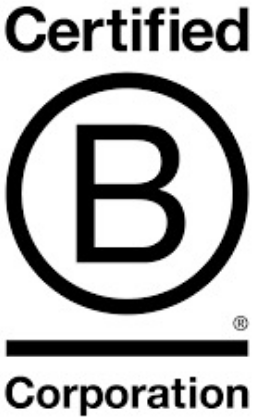
Grow Your Company the Green Way
Every company wants to grow – but can you do it without destroying the environment?
It’s relatively easy for a small business to avoid hurting the environment much. But as your company grows, it’ll probably consume more, waste more, and pollute more. In addition, you’ll need to generate greater quantities of your product or service at a faster pace, which may tempt you to cut corners on environmental standards.
Don’t do it. When you help the planet, you can help yourself -- if you do it the right way.
How green helps you grow
Prioritizing the planet can lead to benefits such as lower costs, higher employee retention, and rising sales (from 2013 to 2019, “products marketed as sustainable grew more than five times faster than those that weren’t,” says Harvard Business School marketing professional Catherine Cote). Here’s how a variety of companies have used environmentalism to spur growth – and how you can do it, too.
Build employee loyalty.
“From 5K runs that support local environmental groups to bike-to-work programs and volunteer opportunities, Patagonia allows employees to work for the good of the planet. … While other brands struggle to retain top talent, Patagonia only has 4% employee turnover. They attribute it to allowing passionate employees to be activists.”
– Anonymous, “6 Examples of Sustainability in the Workplace (And Their Impact),” Recycle Coach, July 2, 2020
Market and sell to eco-conscious buyers.
“Their website features enchanting images of kids having good clean fun — that’s good for the environment. Their mission is simple: raising awareness about sustainability while delivering unquestionably safe products. And as such, they attract the kind of parents and customers that are dedicated to going green.”
– Carrie Sownie, “11 Eco-Friendly Brands That Put the Planet First,” 99 Designs, November 20, 2020
Save money on fossil fuel.
“United Airlines Holdings Inc. has been making its planes lighter, driving down fuel use and costs. Airlines account for almost 2% [of] global carbon emissions. Not even the in-flight magazine has been spared in the search for unnecessary heft: Changing to a lighter paper stock saved almost $300,000. … United has saved more than $2 billion on fuel so far.”
– Chris Martin and Millicent Dent, “How Nestle, Google and Other Businesses Make Money by Going Green,” Bloomberg News, September 20, 2019
Attract green-minded investors.
“Brookfield is an energy company with its focus, as the name implies, on clean, green, renewable energy sources. … Brookfield’s stock has been growing fairly consistently [since 2018], and with a 6.5% yield, this is definitely one to watch for ethical investors.”
– Nigel Frith, “5 Best Environmentally Friendly & Ethical Green Stocks,” AskTraders, April 27, 2021
Create new product lines.
“PepsiCo acquired Sodastream, the world’s leading at-home sparkling water maker. Building on this technology, PepsiCo has begun to bring packaging-free, customizable beverages to workplaces, college campuses, and airports. This new business positions PepsiCo to win in the increasingly personalized beverage market and to save an estimated 67 billion single-use plastic bottles.”
– David Young and Marine Gerard, “Four Steps to Sustainable Business Model Innovation,” Boston Consulting Group, April 29, 2021.
How to acquire the benefits of greenness
To keep your company green as it grows, treat sustainability like marketing or product design – as a crucial function, not a side project. Some tactics that can help:
Commit from the top. A company’s sustainability effort “has to be driven, operationally and in depth, by the CEO and the top leadership team,” according to Harvard Business School professor emeritus Michael Beer. If the top bosses don’t care and push, sustainability will wither away.
Assign leaders. “Take the clothier Marks & Spencer,” says an essay by former Unilever CEO Paul Polman and University of Pittsburgh professor of sustainability and ethics C.B. Bhattacharya. M&S “has sustainability champions in every one of its 1,380 stores to ensure that each store performs the best it possibly can on all sustainability targets.”
Create incentives. “Make it real,” say Falco Weidemeyer and Barry Perkins, strategists at the global business consultancy Ernst & Young. “Link executive and firmwide compensation packages to [sustainability] metrics.”
Look for opportunities everywhere. Just as you’re always looking to raise sales or cut costs, train yourself to find ways to go sustainable. For instance, have you noticed how much energy, paper, and other resources go into copying your incoming mail, distributing it, storing it, and so on? You can make your mail greener by using a service such as Exela’s Digital Mailroom.
Responsible sourcing and partnering
As your company grows, you may need products and services that you never needed before. Respected news and research organizations such as the Wall Street Journal, S&P Global, Barron’s, Newsweek, and Corporate Knights rank the companies listed below as particularly eco-friendly.
Technology
- Cisco Systems
- Intel
- Nvidia
- Maxim Integrated Products
- Schneider Electric
- Xerox
- SAP
- Hewlett Packard Enterprise
- Texas Instruments
- Workday
- Autodesk
- Apple
- Alphabet (parent company of Google)
- Salesforce
- Adobe
- IBM
Consumer products
- Patagonia
- HP
- Seventh Generation
- Nike
- McCormick
- Unilever
Other industries
- Merck (healthcare)
- Ball (packaging)
- American Water Works (water services)
- Air Products (energy)
- Waste Management (waste disposal)
- Eastman Chemical (materials)
- Biogen (healthcare)
You can also look for companies and products that have earned eco-friendly certifications. Some examples:
A Certified B Corporation meets high environmental and other standards “from your supply chain and input materials to your charitable giving and employee benefits,” says the B Corporation website.

The global nonprofit Green Seal certifies that products and services ranging from construction materials to food packaging meet high standards for health, sustainability, and performance.

If you need office space, look for LEED. Leadership in Energy and Environmental Design has certified more than 135,000 buildings and other projects as eco-friendly in design, construction, operations, maintenance, and land development.

Growing companies need computers and other electronics. Before you buy, find the ENERGY STAR logo. It certifies that a product is energy efficient.

ENERGY STAR, LEED, Green Seal, and Certified B can help you find good supplies and suppliers no matter what your company does. You can also find certifications for specific industries.
- If you work with food, look for companies certified by the Rainforest Alliance, USDA Organic, or Marine Stewardship Council.
- If textiles are part of your business, look for the Global Organic Textile Standard (GOTS).
- If you’re in retail, construction, furniture, packaging, or another industry that uses forest-derived products, look for a Forest Stewardship Council label.
- More than 400 other certifications, seals, and labels are also available.
Is it worth the effort?
Almost certainly. Saving the world is good in itself, and saving the world while making your company richer is a bonus.
Consider the viewpoint of Francois-Henri Pinault, chairman and CEO of Kering – the parent company of Gucci and other luxury brands. “Sustainable development is a fundamental break that’s going to reshuffle the entire deck. There are companies today that are going to dominate in the future simply because they understand that.”
So plan your strategies, motivate your team, save the world, and get ready to dominate.
